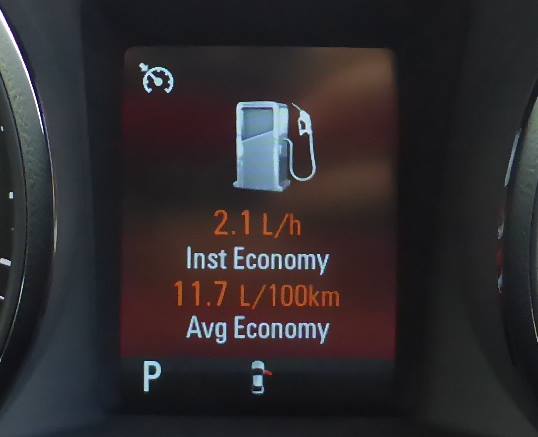Do you need an idling policy?
Unnecessary idling in cars, lorries and buses contributes to a large amount of wasted fuel. It results in air pollution, noise pollution and increased engine wear. Modern vehicles do not need to idle. In the past, drivers will have been told that turning the engine off and on again is bad for it, but with newer vehicles, this is not the case. In fact, 10 seconds of idling creates approximately the same amount of engine wear as turning the engine off and on again.
The most emissions and engine damage is used when starting a vehicle from cold. The best way to warm up a vehicle is to drive it, not to leave it idling. Once a vehicle is warm, turning it off and on again creates negligible wear.
Idling policies have been around since at least 1982 in Atlantic City in the USA. This pre-dates the introduction of vehicle telematics in the late 1990s.
The Highway Code, Rule 123, states that you must not leave a parked vehicle unattended while the engine is running and you shouldn’t leave a vehicle’s engine running unnecessarily while it’s stationary. This rule doesn’t apply on private premises, but it’s a good guideline to follow.
For local delivery vehicles, fuel savings of up to 8% can be achieved, while vehicles that are used on construction sites are often left idling for up to 40% of the time. Idling is less of an issue for lorries on longer journeys where unloading times are quite long and drivers would usually switch the engine off.
Why would you have an idling policy?
Save money on fuel
A car will use between 0.5-2 litres of petrol per hour while idling, depending on the engine size. A small lorry will be in the order of 2-3 litres per hour, while a large bus or articulated lorry can use up to 4 litres of fuel per hour.

Save money on maintenance
Idling for one hour creates roughly the same wear and tear as driving for 25 miles. If a vehicle idles for a significant portion of its life, issues can develop much earlier than expected. Some lorries making frequent deliveries can be idling for up to 25% of the day which means a over a thousand pounds a year per lorries.
If a lorry idles for just one hour a day it’s the equivalent of driving 6500 miles of vehicle wear.
Reduce human and environmental impact
The noise of idling vehicles contributes to overall background noise, and is unpleasant for others in the area.
Idling vehicles create various types of pollution such as nitrous oxides, carbon monoxide and carbon dioxide, plus particulate matter. These pollutants contribute to the deaths of thousands of people every year.
Every litre of fuel burned releases much more carbon dioxide than the weight of the fuel.
Save time
Using more fuel means you have to fill up more frequently. An 8% saving in fuel consumption will mean 8% fewer trips to a petrol station where you could be waiting 15 minutes to fill up and pay.
What do you need in your idling policy?
An idling policy should be a set of guidelines which are easy to understand by your drivers and achieve broad buy-in because they align with your vision and mission.
The most basic requirement of an idling policy is to set out ideal maximum idling times and a list of scenarios where this wouldn’t apply.
For example:
At [your company], if a light vehicle will be idling for more than 30 seconds, we turn off the vehicle.
Light vehicles would include cars, vans and small box trucks. We recommend that medium and heavy vehicles (large buses and lorries) be idled no more than three minutes and preferably less.
The list of potential exemptions include:
- The engine is required to be running because the driver is using power take-off to operate a crane or other equipment.
- The driver is in stop-start traffic (however, for significant delays in traffic, it’s still possible to turn off the vehicle)
- The driver is being directed by a police officer
- Idling is necessary because it’s part of a pre-start inspection
- Idling is necessary to bring up air pressure in a heavy vehicle or to cool down a turbocharger after heavy driving
- The vehicle is being serviced or tested
- Idling is recharging a battery
- Idling is operating in-cab equipment essential for the driver’s health and wellbeing (note that this doesn’t necessarily include air conditioning on a hot day as the driver can open a window or get out)
- Idling is providing power to maintain the temperature of goods or animals carried within the vehicle.
You can also reduce your idling by purchasing vehicles with automatic start/stop technology and choosing lighter-coloured vehicles which need less air conditioning in summer.
How do you implement an idling policy?
It’s hard to enforce because you won’t be there at all times. Drivers often won’t know how long their wait is. The best approach is educating your drivers and agreeing where it’s reasonable for them to shut down the engine.
- Understanding the National Standards for Riding Mopeds and Motorcycles
- Livestock Transport Rules UK: A Complete Guide to Animal Transportation Requirements
- The Role of Safety Advisers in Dangerous Goods Transport
- Sustainable Driving: Reducing Your Environmental Impact on the Road
- Developing Effective Lesson Plans for Driver Training
- UK Agricultural Vehicle Registration and Tax Relief
- Challenges of Transporting Radioactive Materials (Class 7)
- Exemptions and support for Clean Air Zone charges
- Navigating Legal Requirements: The UK Motorcycle Licensing Rules
- Safe Transportation of Agricultural Chemicals and Hazardous Materials
- Innovations in Vehicle Construction for ADR Compliance
- Motorcycle Recovery Operations: How to Recovery a Broken Down Motorbike
- Alternative Fuels in Agricultural Vehicles
- Carriage of Dangerous Solids in Bulk Containers
- Understanding Limited Quantity Exemptions in ADR